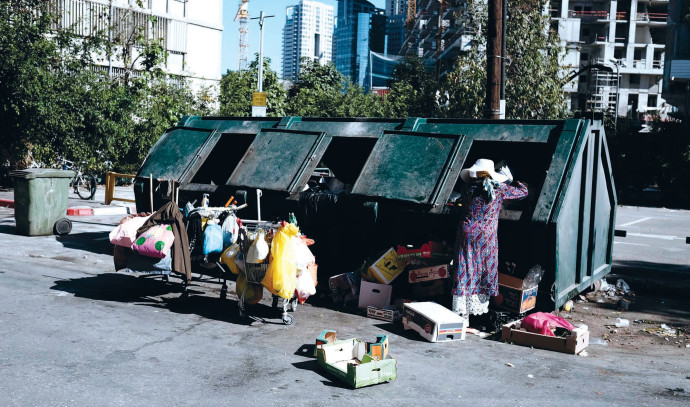Tonight (Thursday), the National Insurance Institute publishes a brief and late report from past data on poverty and inequality in Israel, due to a delay in the arrival of data from the Central Bureau of Statistics on which the report is usually based, in the shadow of the government’s political chaos. Nevertheless, this year’s report also shows that alongside the socio-economic crisis of the past year, the one that preceded it, 2019, was characterized by a social deterioration without a functioning government in Israel (recall that the political crisis began with the dissolution of the 20th Knesset exactly two years ago).
According to the report, 1,980,309 Israelis live below the poverty line, as of last year, according to the National Insurance Institute. These are 23% of Israeli citizens and 31.7% of Israeli children. In the Arab sector 702,832 poor people, 346,397 children, and in the ultra-Orthodox sector 500,396 poor people, 296,167 children. In the Jewish population, the proportion of the poor is 17.7%, but in the ultra-Orthodox sector alone it is 49%.
In the Arab population, 35.8% live in poverty. Soon the people working in Israel, who are not only supported by benefits, the poverty rate stands at 18.8%, almost every person works fifth. 155,279 senior citizens in Israel live below the poverty line.
The general standard of living has dropped – employees have escaped poverty, the self-employed less so
The report’s findings indicate that the standard of living of families in Israel, as measured by the median economic income, Decreased in 2020 by a considerable rate of 22.7% with the main casualties being the middle class deciles. In addition, there was a significant increase in the poverty rate and inequality from 22.4% of the poor in Israel in 2019 to 23% in 2020.
Although according to the calculation of the 2019 poverty line, the number of poor in Israel increased by half a percent, but the report emphasizes that given the intensity of the economic crisis, the increase in poverty measured by this calculation is surprisingly moderate, and again illustrates the importance of emergency measures taken this year. In the deployment of a social safety net for employees in Israel. Not surprisingly, Poverty rates among the self-employed population who are not entitled to unemployment benefits at all since the beginning of the crisis have risen from 15.3% to 16.5%.
Unemployment benefits alone rescued 23.6% of families from poverty, Compared to 2% in 2019. The assistance in the form of unemployment benefits for all Corona unemployed in Israel in particular, created only a moderate artificial decline of 4.4% in the standard of living measured only by disposable income, but the Social Security emphasizes: “This is still an abnormal decline compared to previous years. “3% -4% per year. A decrease of a similar magnitude occurred only recently in 2001.”
Against the background of the distortion of data in the past year due to such a significant increase in aid benefits in light of the corona crisis, the Social Security emphasizes: “It is possible that even people who were poor in the past will not be defined as poor this year. “But close to the poverty line in 2019 and whose income fell by less than 4.4%, he finds himself outside the poverty line even though his condition has worsened, and his sense of worsening poverty has increased.”
 Pethon Lev’s helpline (Photo: Pethon Lev)
Pethon Lev’s helpline (Photo: Pethon Lev)Eli Cohen, CEO of Pethon Lev, said of the report’s data: “For years we have been arguing that poverty is a scourge of a country that is only expanding to new audiences. According to the report – a decrease of 23% in the standard of living, means That the lower part of the middle class has degenerated into poverty, While what curbs the catastrophe are government payments. In the near future, government payments will stop, while the decline in living standards will remain. ”
“A new generation of poverty is created here – families affected by the corona who were ‘born’ into the cycle of poverty with no choice. Behind every number, figure and statistic in the report is a person, family and business that collapsed – with many dreams and big debts. “The State of Israel must stop counting data and start acting – there is no plan to eradicate poverty on the horizon and every year the report worsens, without a promise or purpose on the part of the government,” he added.
